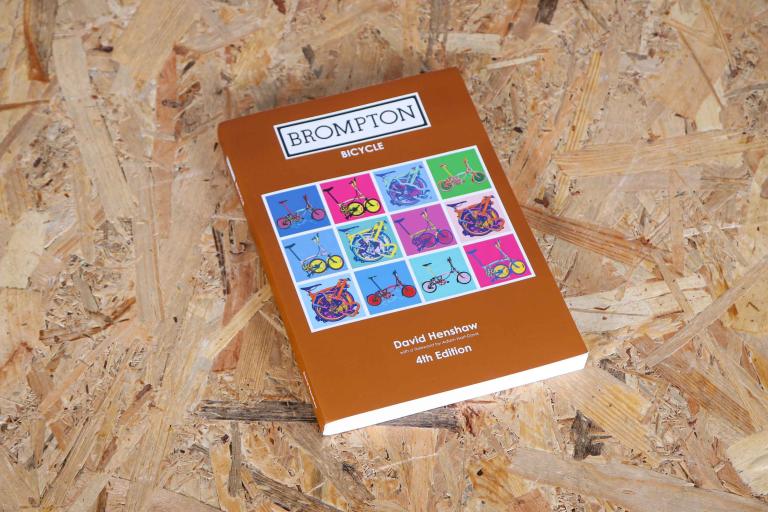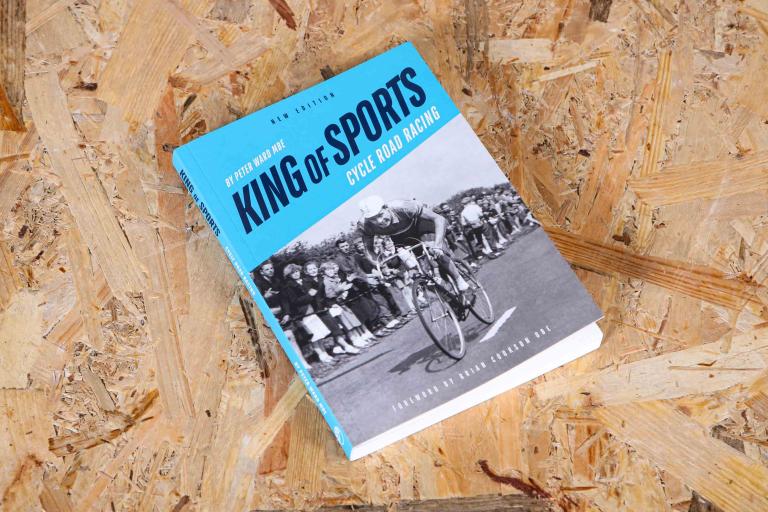- News
- Reviews
- Bikes
- Components
- Bar tape & grips
- Bottom brackets
- Brake & gear cables
- Brake & STI levers
- Brake pads & spares
- Brakes
- Cassettes & freewheels
- Chains
- Chainsets & chainrings
- Derailleurs - front
- Derailleurs - rear
- Forks
- Gear levers & shifters
- Groupsets
- Handlebars & extensions
- Headsets
- Hubs
- Inner tubes
- Pedals
- Quick releases & skewers
- Saddles
- Seatposts
- Stems
- Wheels
- Tyres
- Tubeless valves
- Accessories
- Accessories - misc
- Computer mounts
- Bags
- Bar ends
- Bike bags & cases
- Bottle cages
- Bottles
- Cameras
- Car racks
- Child seats
- Computers
- Glasses
- GPS units
- Helmets
- Lights - front
- Lights - rear
- Lights - sets
- Locks
- Mirrors
- Mudguards
- Racks
- Pumps & CO2 inflators
- Puncture kits
- Reflectives
- Smart watches
- Stands and racks
- Trailers
- Clothing
- Health, fitness and nutrition
- Tools and workshop
- Miscellaneous
- Buyers Guides
- Features
- Forum
- Recommends
- Podcast
review
 Alpe d'Huez by Peter Cossins
Alpe d'Huez by Peter Cossins£16.99
VERDICT:
A thorough explanation of why Alpe d'Huez can now claim to be the best known climb in cycling
Weight:
490g
Contact:
At road.cc every product is thoroughly tested for as long as it takes to get a proper insight into how well it works. Our reviewers are experienced cyclists that we trust to be objective. While we strive to ensure that opinions expressed are backed up by facts, reviews are by their nature an informed opinion, not a definitive verdict. We don't intentionally try to break anything (except locks) but we do try to look for weak points in any design. The overall score is not just an average of the other scores: it reflects both a product's function and value – with value determined by how a product compares with items of similar spec, quality, and price.
What the road.cc scores meanGood scores are more common than bad, because fortunately good products are more common than bad.
- Exceptional
- Excellent
- Very Good
- Good
- Quite good
- Average
- Not so good
- Poor
- Bad
- Appalling
Why is it that Alpe d'Huez has achieved its legendary status – especially within the Tour de France? This book explains all.
Although the climb is used in other races, it is really only le Tour that has built the legend. It was not the first mountain to be used in the race, nor has it been used more frequently than any other; it is certainly not the longest, steepest, or even highest mountain climb that le Tour uses. And yet how many other climbs could justify a book dedicated solely to the mountain's role within the sport?
As American cyclist Andy Hampsten once said: "In all honesty, the climb is ugly and the town's not spectacular." Take away the cyclists and you are left with a well engineered and wide road that services a successful ski resort.
Buy this onine here
It was this role as a ski resort that initially attracted investment and interest in the area, but as this book explains, the climb just happened to be in the right place at the right time to benefit from le Tour's presence.
As mountains became a more frequent feature of le Tour, the Alpe became its first mountain top finish in 1952. Since then, summit finishes have played a greater part in shaping the race, and as a dead end that was the only role that the Alpe could play. That was until 2013, when the little known descent of the Col de Sarenne was used for the first time, allowing the race to climb the Alpe for the second time in the same stage – and still finish at the top of the climb.
History was made again this year when the Alpe stage was the penultimate of le Tour; normally the logistics of moving the whole race to Paris in time for the final day has made this impractical, but with the Sunday stage now starting later in the day, this has become feasible – and after the tension of the stage this year the route planners will surely be hoping that they can have a repeat performance as soon as possible.
The book covers the stories from when the climb has been part of a significant or race-winning stage, such as the Hinault and LeMond duel in 1986, or the time trial stage in 2004. Stages such as these attracted significant media coverage, often well in advance of the event - all helping to build the legend.
Many of these stories have been covered before, but in this book we get to hear about new angles, such as what difference a win on the Alpe made to the future career of those riders lucky enough to achieve one. Not surprisingly, drugs were sometimes an integral part of these exploits, although we may never know to what extent.
When you have a readily accessible climb that keeps making the sporting headlines, you are going to attract the crowds. With the growing band of MAMILs, sportive riders, and others looking for a challenge, many will want to ride well-known parts of le Tour's route as well – and where better for these enthusiasts to test themselves than Alpe d'Huez? 'Like Wembley, St Andrews and Centre Court, it is a prime strip of sporting real estate, its iconic status supported by history, its unique atmosphere... unlike those other arenas, however, it is unmistakably open to anyone.'
Nowhere is that unique atmosphere more tangible than at 'Dutch corner': again, things just happened at the right time to help build towards the week-long party that we know today. It helps that 50 years ago Dutch riders were winning a disproportionate number of the Alpe's stages, and that this encouraged disproportionate and passionate media coverage back in Holland. The choice of bend seven was not a coincidence, as the presence of a tap at the nearby cemetery to allow the flowers to be watered made camping a practical proposition.
Of course, before any of these factors can play a part the race organisers have to decide to send the race that way, and that comes down to money. In exchange for 'a little bit more than €300,000', a ski resort can fill their hotel rooms and promote their name. Other resorts have the same opportunity, but not all resorts manage to reap the rewards to the same level as the Alpe, where 'the resort as a whole will make perhaps €10 million or more from the event'. They certainly work at it, but ultimately we are the ones who keep the legend going.
This book both explains and reinforces the status of the Alpe in cycle sport. Whether you agree with that position or not, the fact is that more people are likely to ride up this climb than any other on le Tour's roster, and this book will help us understand why.
Verdict
A thorough explanation of why Alpe d'Huez can now claim to be the best known climb in cycling
road.cc test report
Make and model: Alpe d'Huez by Peter Cossins
Size tested: Hardback and eBook
Tell us some more about the technical aspects of the product?
Title: Alpe d'Huez
Author: Peter Cossins
Publisher: Aurum Press
Date: May 2015
Format: Hardback
Pages: 298
ISBN: 9781781314258
About the tester
Age: 55 Height: Weight:
I usually ride: My best bike is:
I've been riding for: Over 20 years I ride: Every day I would class myself as: Expert
I regularly do the following types of riding: commuting, touring, club rides, sportives, general fitness riding
Latest Comments
- quiff 5 min 45 sec ago
The intent is interesting - you might argue that the intent is deterrent and you never intend anyone to actually come into contact with the gas - a...
- Secret_squirrel 6 min 30 sec ago
Goalpost 1...
- quiff 22 min 10 sec ago
Only £350 a month? I wonder why? (Great car I'm sure, but I hate the recent BMW grille design)
- howyaBen 23 min 11 sec ago
I like the measure of effectiveness of the new Hutch tires, % of wattage improvement. Instead of saying, "28.6 watts at 49.34 km per mile a nano...
- David9694 23 min 29 sec ago
Random driver account: "cyclists should be made to wear hi viz like workers do on a building site"....
- dubwise 34 min 13 sec ago
Nice to see Police Scotland clamping down on road traffic offenders https://archive.is/BUiil Oh wait, they just go after the vulnerable road users.
- quiff 35 min 49 sec ago
"The algorithm" served me an older JV video last week which I now can't get out of my head....
- OnYerBike 1 hour 39 min ago
Is that normal for that spot? Pretty sure sand (and/or other sand-like substances) is commonly used to soak up spilled diesel, so if a load of sand...
- quiff 2 hours 53 min ago
Holy thread resurrection Batman!




Add new comment
6 comments
Never been interested in it myself. It's just a windy road to an ugly resort and as a TDF stage just a yob magnet.
Aah but look around when you get to the top - stunning views.
I've been there a few times for the tour - I think the yobs are very much in the minority.
Bah Humbug!
And if you haven't seen it then here is the film the Beeb made with him about it...
http://www.bbc.co.uk/iplayer/episode/p02xtmq8/bespoke-alpe-dhuez-the-hol...
Features me as well !
Yes the Croix Der Fer, Galibier and Madeline are better rides and stunning. However there is a mystique about the Alpe that means everyone who wants to climb mountains has to do it.
As you turn every corner on the mountain you feel what it means, you imagine as you pass Dutch corner what it must be like for the pro's.
I died a thousand deaths on there with 40C temperatures, but I am going back and it will NOT defeat me !